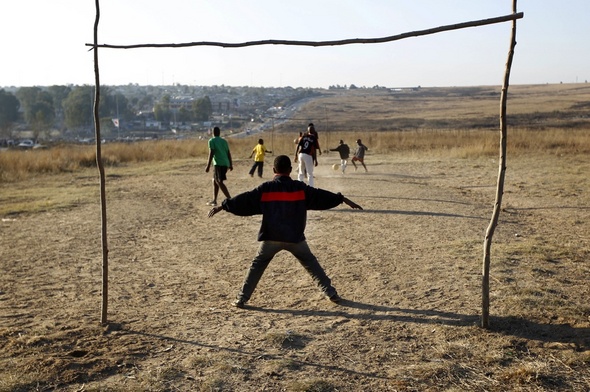 |
| photos copyright Jessica Hilltout / The Amen Project |
I started role-playing in 1981 with Tom Moldvay's D&D Basic Rulebook. It's elegant, simple, flexible and continues to rise in my estimation despite, and admittedly in some cases because of, its unique quirks. I'm really glad that Daniel Proctor chose to emulate Moldvay's edition of D&D when writing Labyrinth Lord, making that iteration of the rules widely available once more. When I'm playing with my kids at home, I'll often grab Proctor's book if I need to check a spell range or morale rating. I was even happier when Drive Thru RPG made pdf scans of Moldvay Basic available for about five bucks! If you've never read it, or your copy disappeared in a yard sale years ago, then check out Blackwarden's fine blog devoted to his own rereading of that presentation of the rules.
That being said, Dagger for Kids (Jimm Johnson and John Adams), with its simplistic, minimalist approach to role-playing rules, got me to pause and question some of my long-held assumptions.
 |
| photos copyright Jessica Hilltout / The Amen Project |
Whether I was playing D&D, 2nd edition Gamma World, Star Frontiers, Marvel Superheroes, Pendragon, GURPS, West End's Star Wars, TMNT and Other Strangeness or Robotech by Palladium, Shadowrun, Call of Cthulhu, White Wolf's Vampire the Masquerade or Werewolf the Apocalypse, or Earthdawn, we always began with generating ability scores / attributes. Maybe we rolled for them; maybe we used a point-buy system, but those stats were always the first introduction to the character we were about to play. They always came with modifiers or certain dice pools and gave us a quick shorthand for what this imaginary life we were about to explore both was and was not.
Dagger for Kids, however, in a quest for bare-bones simplicity, dispenses with attributes altogether.
No Strength, Dex, 3d6 ... none of it.
Instead you fast forward to picking a class, rolling hit points, jotting down your AC and saving throw (one) and playing the game.
 |
| photos copyright Jessica Hilltout / The Amen Project |
The weird thing, as you know if you've been following the exploits of my middle schoolers here, is that it works.
Actual game play is a tiny bit faster (dice rolls are unmodified), but the activity, choices, tensions, risks, and excitement at the table aren't markedly different than any other session of D&D I've played over the last 30+ years, including the three or four sessions of third edition that I've GMed, or Gamma World, Earthdawn, or Shadowrun: Bug City for that matter.
I think I prefer stats (they help me visualize the character as well as informing in-game choices via slight modifications to the game mechanics), but they really aren't critical to creating the experience at the table that I associate with role-playing.
 |
| photo accessed at http://senegurl.wordpress.com/ |
So what is critical to creeping through unexplored dungeons, listening carefully at doors, evading traps, solving riddles, outsmarting monsters and trying to survive long enough to haul the loot back to the surface world and the fields men know? How minimalist can you become before losing the spirit of the game? Or, put other-way-around, what is essential to creating that very basic, tactical-but-invested, high-tension, high-engagement style of imaginative recreation?
 |
| . |

No comments:
Post a Comment